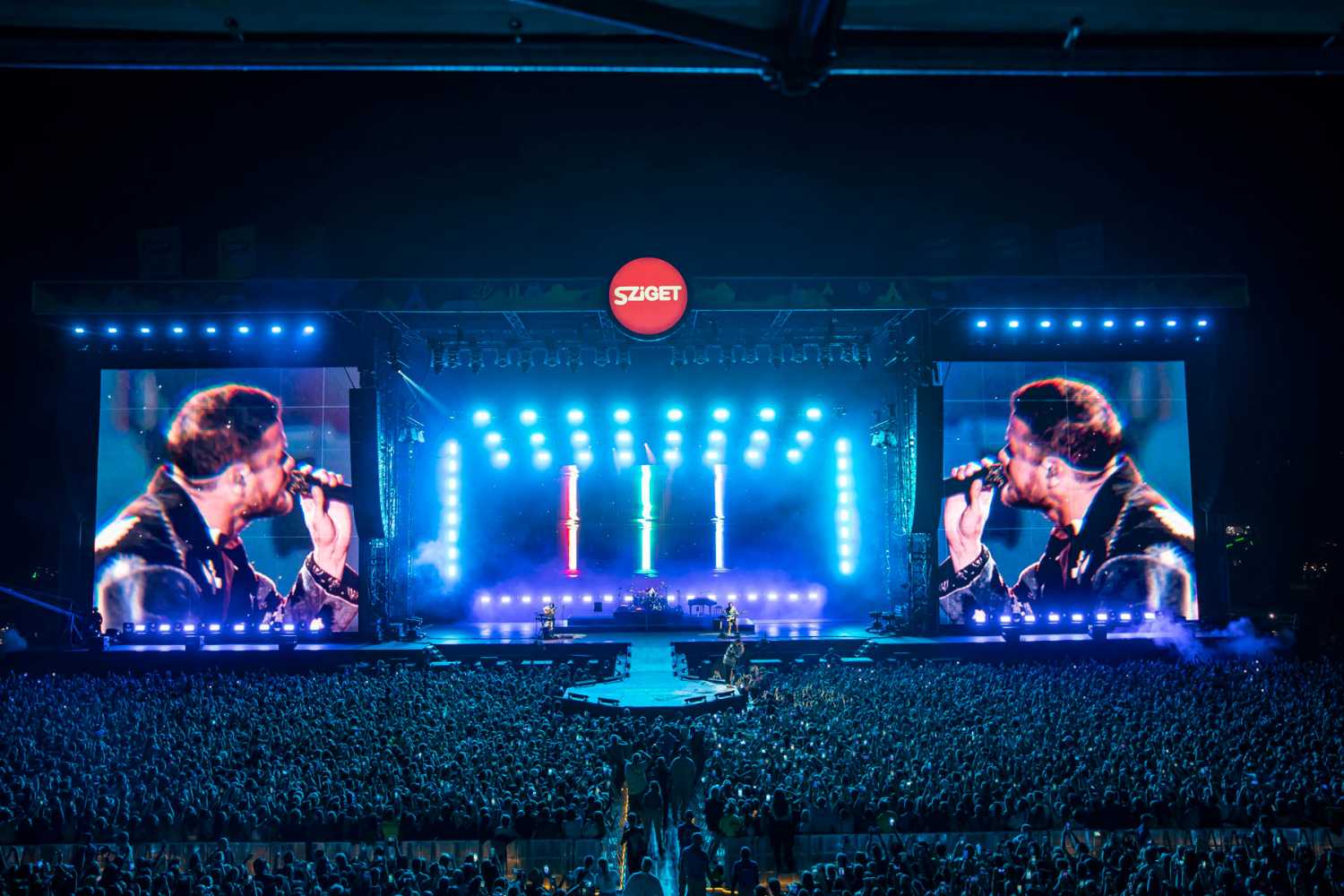Robe shines on The Island of Freedom
- Details

Robe moving lights had a big presence this year across three major performance areas - the Main Stage, the massive FreeDome Tent and the dropYard rap stage - as well as on some of the other venues around the site that hosted over 1,000 performances on the ‘Island of Freedom’ as it’s known for the duration.
Headlining the Main Stage this year were a host of internationally acclaimed artists like Imagine Dragons, David Guetta, Billy Eilish, Florence + The Machine, Lorde and Macklemore, plus a plethora of other top level artists, together with events all over site from wild dance parties to alternative arts, pubs, cocktail bars, chill out zones, seminars dedicated to current hot topics like AI and climate change; workshop areas and places where charities and NGOs could showcase their work and campaigns.
Production lighting for the Main Stage was designed by Mark Kontra, part of the team from rental specialist Colossal which supplied all the lighting kit for this area.
The Robe count here this year was over 160, with 42 x Fortes, 8 x iForte, 64 x Pointes and 56 x ColorStrobes. Four BMFL Spots running on four RoboSpot systems were available for those requesting it, which were Florence & The Machine and Lorde. Imagine Dragons brought in their own seven-way touring RoboSpot system complete with BMFL LTs.
The philosophy with Sziget’s Main Stage lighting is to be as “accessible and accommodating as possible”, explained Mark, and as the basic design process starts at the end of the previous year and well ahead of any technical riders being available, it also must be flexible.
The production rig is also designed to make overnight headliner programming sessions as smooth and seamless as possible. “We provide enough of everything,” states Mark, “but also try and keep it simple so everyone can clone their show files without any hassle!”
David Guetta brought in one of the more complex floor packages (designed by the team at High Scream) which included his own LED screen part flown and partly ground supported immediately behind his DJ platform and in front of the large 20 metre x 7 metre house LED screen at the back. This was supplemented by a left and right IMAG screen.
At FOH, two grandMA3 full-size consoles and two grandMA3 lights provided control running with five NPUs over a Luminex network.
Colossal also provided a visualisation suite on-site for anyone wanting to take advantage. Mark comments that as a 15-year festival veteran, Sziget is a big part of his life and something in the calendar that he looks forward to every year.
The Visual Europe Group (VEG) were the lighting, audio, and video equipment suppliers for the Freedom Tent. They have one of the largest Robe rental inventories in Hungary, and Robe was once again prominent on the rig which was designed by Laszlo Szonyi, head of lighting at VEG’s Budapest office.
Helping to make an eclectic variety of styles and genres of music move and groove with four live acts each evening were 42 x Robe BMFL Spots, 24 x Tarrantulas and 24 x MegaPointes plus some other lights.
The dropYard hip hop stage features a semi open tent, the stage located at the closed end and the FOH at the open end, with lighting co-ordinated by David Kovacs and the kit also supplied by Colossal. The production design for lighting was also completed by Mark Kontra.
dropYard hosted four live acts per evening and was used throughout the day for breakdancing workshops and other activities which also needed some lighting.
Main Stage lighting was rigged on a ground supported structure upstage and on this 24 x Robe Spiiders and 16 miniPointes were deployed.
On the front truss were another 12 Spiiders, plus some blinders, with LED floods attached to the stages of the tented structure to help light the audience further back and cube LEDs on the front of the stage that also lit the audience and were good for boosting the daytime atmosphere. The front truss Spiiders were also used for DJ key light.
For control, there was a grandMA3 light, and David and his colleague Mark Stiller operated for those acts not bringing their own LD. The challenges were keeping everyone happy onstage and getting some nice audience reaction from the lighting, something that David loves. “It makes all the hours and days of hard work worth it when what you’re doing gets a reaction,” he commented.









